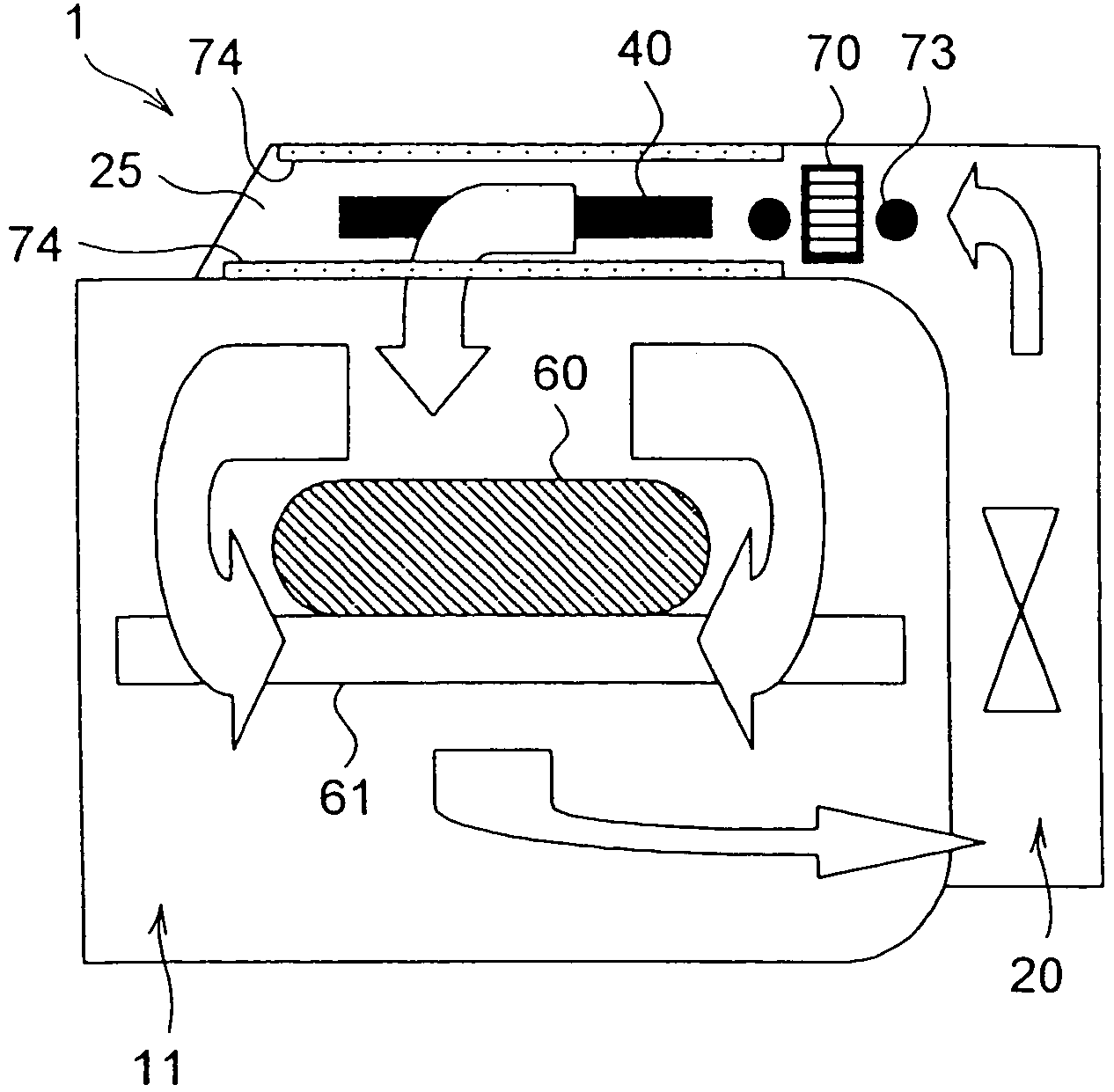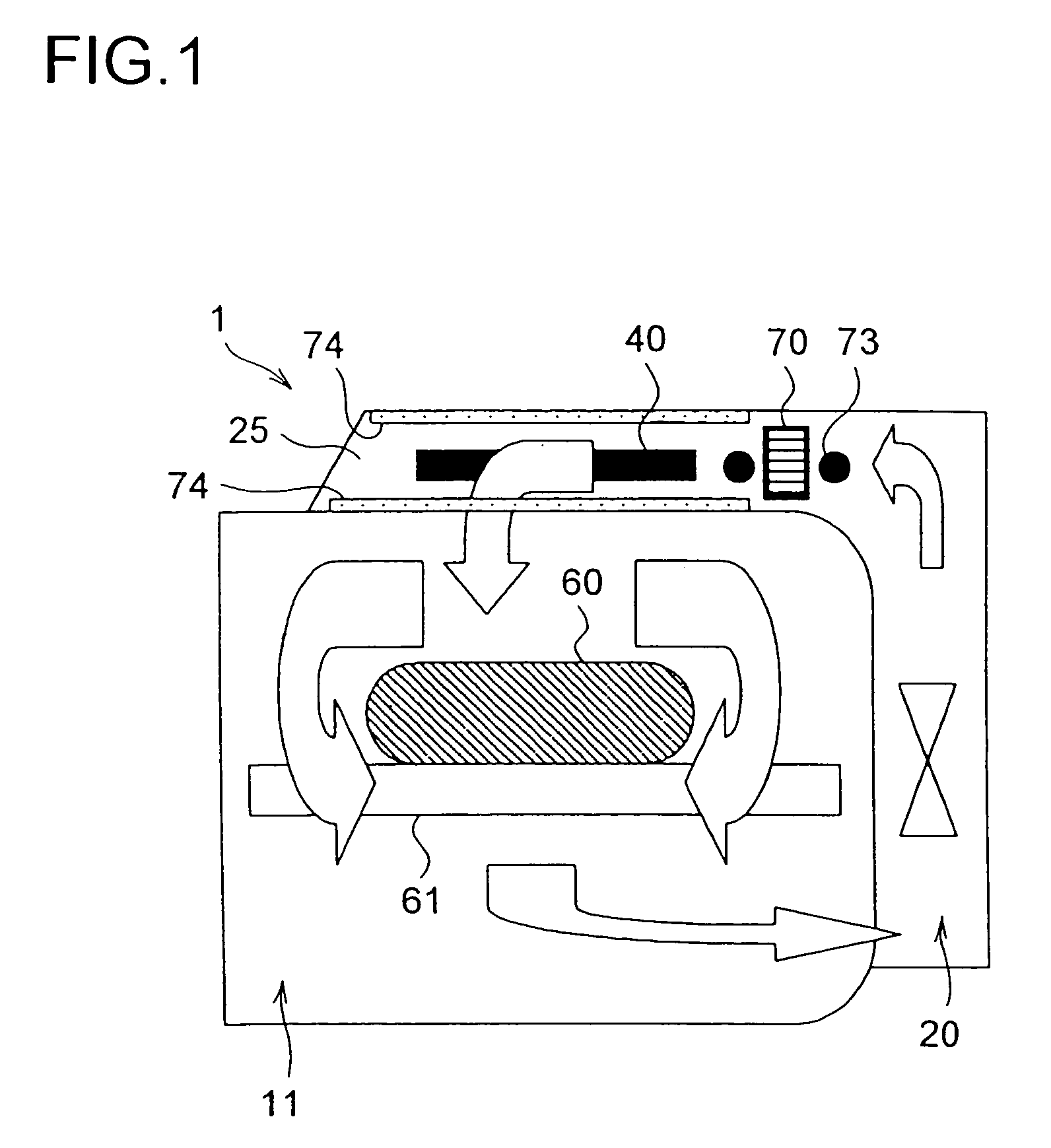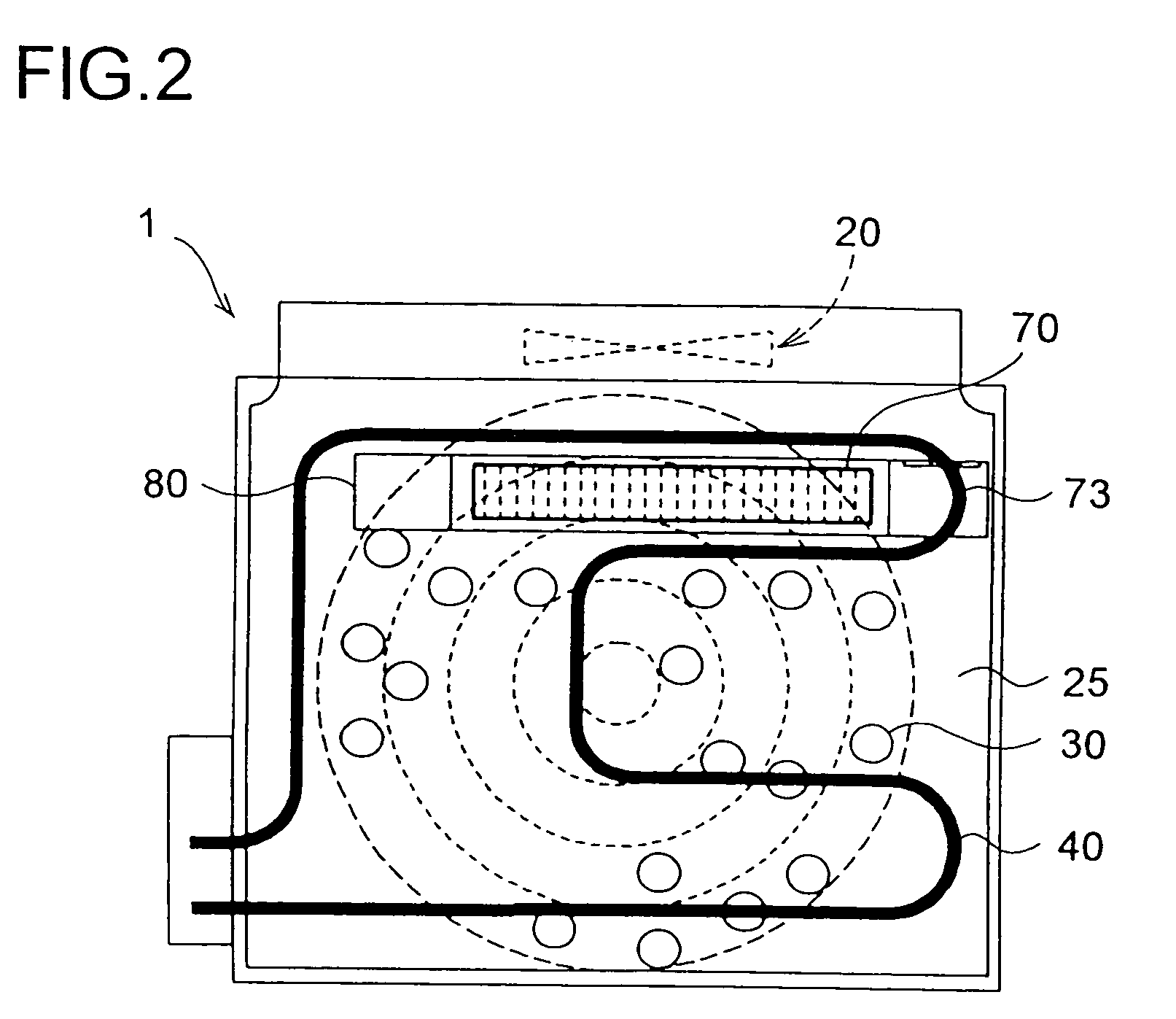Heating cooking device
a technology of cooking device and heating chamber, which is applied in the field of cooking oven, can solve the problems of spoilage, odor, and interior soiling of the cooking chamber and ducts, and achieve the effect of increasing the contact area, efficient heating of air, and not reducing the flow speed of the air stream
- Summary
- Abstract
- Description
- Claims
- Application Information
AI Technical Summary
Benefits of technology
Problems solved by technology
Method used
Image
Examples
first embodiment
[0072]The catalyst block 70 needs to be used in a temperature range that permits it to function satisfactorily. To achieve this, as a heat source for heating the catalyst block 70, there is provided a catalyst heater. The upper heater 40, which is the main heat source for producing the hot air stream, is shared as the catalyst heater. In the first embodiment, the upper heater 40 is realized with a sheath heater, and part of it is laid near the catalyst block 70 so as to serve as the catalyst heater 73.
[0073]The catalyst block 70 is arranged in such a way that the air stream passes through the inside of the tubular vent ports 72, i.e., in such a way that the length direction of the block as a whole is perpendicular to the air stream. This arrangement is shown in FIG. 4. The catalyst heater 73 is so formed as to face both the upstream and downstream surfaces, with respect to the air stream, of the so arranged catalyst block 70. In other words, the catalyst heater 73 is so shaped as to...
second embodiment
[0088]FIG. 7 shows a The fitting member 80 is fitted not on the upper surface of the ceiling wall 12 but to the ceiling surface of the upper duct 25. In this construction, the catalyst block 70, acted upon by gravitation, spontaneously falls onto the bottom of the frame portion 81 and leaves a gap from the ceiling surface of the upper duct 25. This makes it possible to omit the cut-out pieces 84.
third embodiment
[0089]FIGS. 8 and 9 show a A heater support portion 85 for supporting the bent portion formed at a midpoint of the catalyst heater 73 is formed integrally with one of the anchoring support portions 82 of the fitting member 80. The heater support portion 85 has an engagement cut 86 formed in an edge thereof so that the catalyst heater 73 is fitted into it. Thus, the heater support portion 85 holds the catalyst heater 73 in such a way that the catalyst heater 73 does not make contact with the catalyst block 70.
[0090]As described earlier, the fitting member 80 is made of a metal having a high thermal conductivity. Moreover, the frame portion 81 is kept in surface contact with the top, left-side, and right-side surfaces of the catalyst block 70. Thus, as shown in FIG. 9, the heat generated by the catalyst heater 73 conducts from the heater support portion 85 to the frame portion 81 and then to the catalyst block 70. This permits the catalyst block 70 to be heated efficiently.
[0091]FIG....
PUM
 Login to View More
Login to View More Abstract
Description
Claims
Application Information
 Login to View More
Login to View More - R&D
- Intellectual Property
- Life Sciences
- Materials
- Tech Scout
- Unparalleled Data Quality
- Higher Quality Content
- 60% Fewer Hallucinations
Browse by: Latest US Patents, China's latest patents, Technical Efficacy Thesaurus, Application Domain, Technology Topic, Popular Technical Reports.
© 2025 PatSnap. All rights reserved.Legal|Privacy policy|Modern Slavery Act Transparency Statement|Sitemap|About US| Contact US: help@patsnap.com



